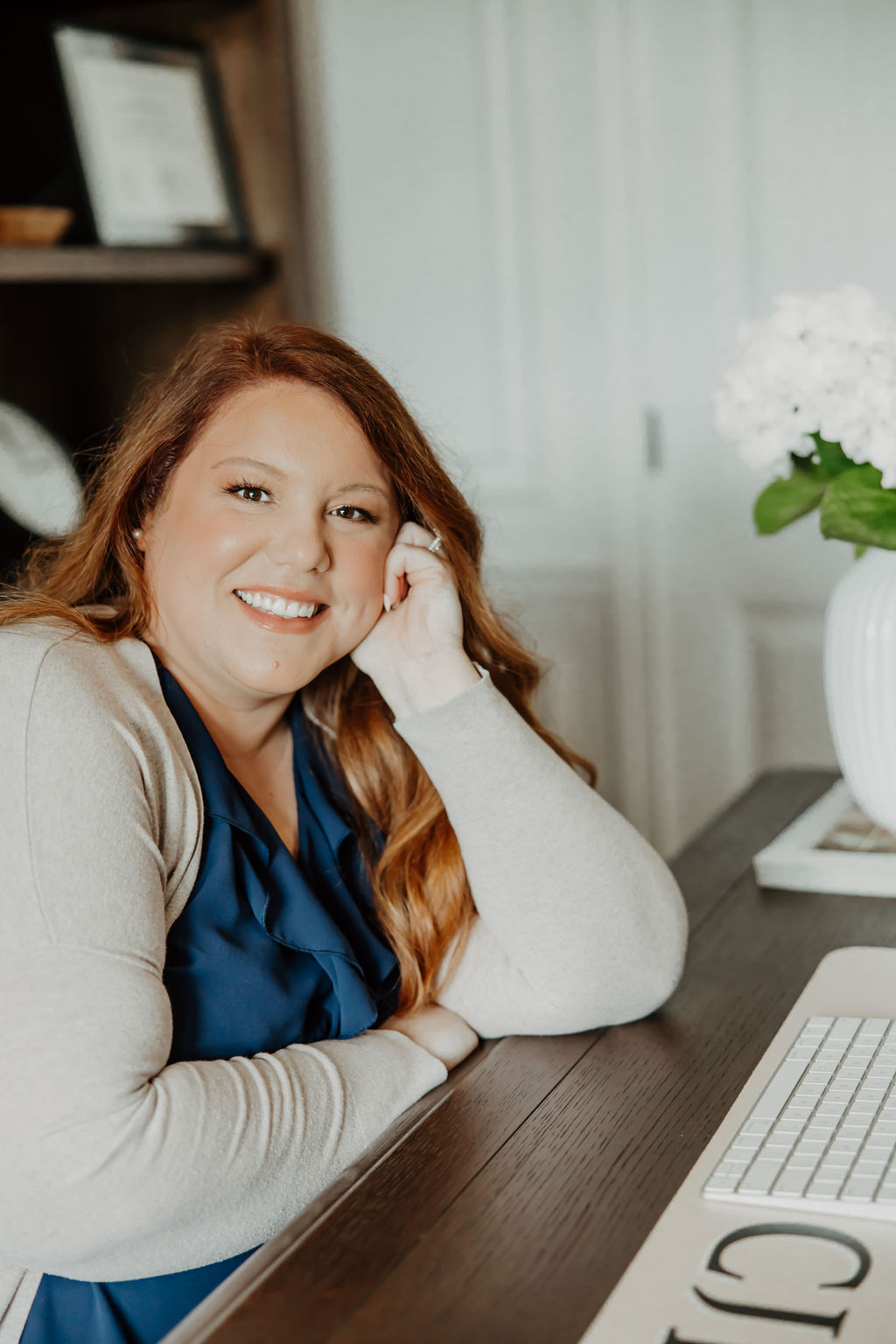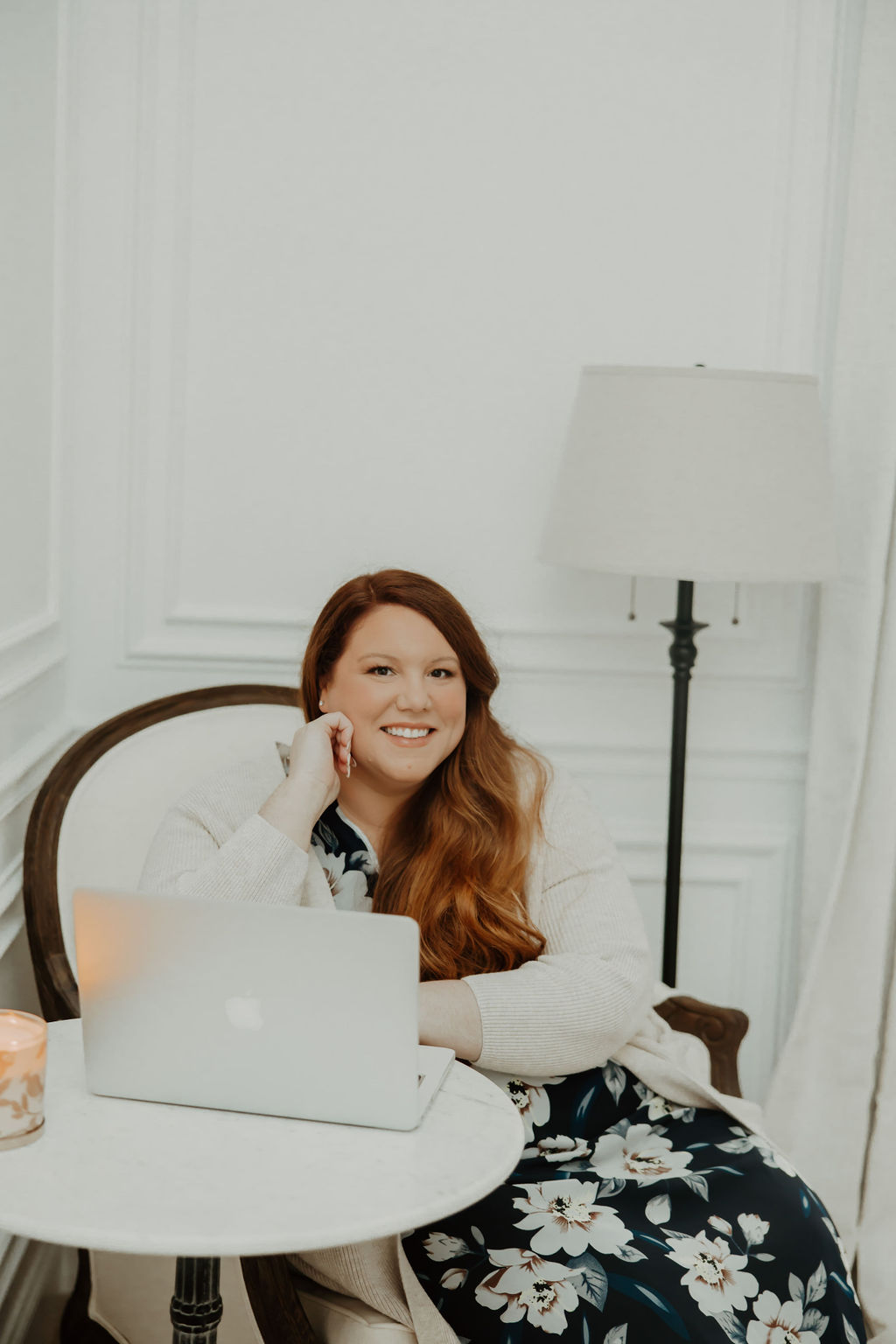Alright – so today we’ve got the honor of introducing you to Cierra Listermann. We think you’ll enjoy our conversation, we’ve shared it below.
Alright, Cierra thanks for taking the time to share your stories and insights with us today. Looking back at internships and apprenticeships can be interesting, because there is so much variety in people’s experiences – and often those experiences inform our own leadership style. Do you have an interesting story from that stage of your career that you can share with us?
During my graduate training in my doctoral program, I had the opportunity to complete an internship within the correctional system. I expected it to be challenging, but what I didn’t anticipate was how deeply it would shape my path as a psychologist.
Each day, I met with individuals whose lives had been marked by unimaginable hardship including childhood abuse, violence, neglect, and the kinds of traumatic experiences that often go unseen by the world outside those walls. I quickly realized that behind the labels of “inmate” or “offender” were people carrying the heavy, invisible weight of trauma.
What struck me most was how trauma wasn’t just a part of their past but shaped their present, their choices, their relationships, and their sense of self. Many of the behaviors that brought them into the system weren’t about “badness” or “brokenness,” but survival responses that had become deeply ingrained and long-standing generational trauma.
That experience ignited something in me. I knew I wanted to dedicate my career to understanding trauma and helping people heal from it. The correctional system showed me, in a very real way, how untreated trauma can ripple through a person’s entire life. Even when someone is released, trauma can keep them imprisoned in cycles of fear, shame, and self-protection that limit their ability to feel safe, connected, or hopeful. Healing, then, became about more than simply reducing symptoms. It was about freedom. Freedom from the grip of the past. Freedom from the patterns that once kept people stuck. Freedom to reclaim their voice, their choices, and their lives.
That realization became the foundation of my work and was the start of my journey toward specializing in trauma and PTSD. My clinical work is rooted in the belief that healing offers a kind of liberation. Not just from emotional pain, but toward a life that feels whole, grounded, and open again. I’ve carried the lessons from that internship into every session I’ve had since.
Great, appreciate you sharing that with us. Before we ask you to share more of your insights, can you take a moment to introduce yourself and how you got to where you are today to our readers.
I am a licensed psychologist specializing in trauma and post-traumatic stress disorder (PTSD). My practice, Carolina Trauma Recovery and Psychological Services, PLLC, is dedicated to helping adults who feel stuck in the aftermath of painful or overwhelming experiences. Many of my clients come to me carrying the weight of childhood abuse or neglect, relational trauma, sexual assault, military service, or sudden life events that have changed everything for them. Others reach out because they find themselves caught in cycles of anxiety, depression, or disconnection that often trace back to unhealed wounds.
Through my exclusively virtual tele-health practice, I provide individual therapy to clients across North Carolina, making it possible to access care from the comfort and privacy of their own space. I know that reaching out for help is often the hardest step, and I want therapy to feel as safe, convenient, and supportive as possible. My practice and clinical approach is centered around my axiom “your story is uniquely your own—your therapy should be too,” which guides everything I do, from how I structure therapy sessions to the way I collaborate with clients on their goals. I believe anyone who has experienced something they feel was traumatic for them deserves a safe space to tell their story. A space where they feel heard, understood, accepted, and believed. I stand by the notion that there is no such thing as comparative trauma. All of my clients matter, the experiences that have impacted them are important, and their pain is valid. Together, we work toward forging a path toward healing and recovery to grow beyond their trauma, where their stories no longer need to weigh them down and prevent them from living the lives they want and deserve to experience.
My presence in therapy is warm, relational, and collaborative. I see my role as walking alongside clients, providing both compassion and effective tools to move forward. Together, we untangle the impact of trauma so clients can build lives that feels safe, connected, and meaningful again. I describe my therapeutic style as like having coffee with an old friend. A friend that you have cultivated a strong and trusting relationship with over time. Someone who you know will be honest with you and has your best interests at heart. A friend who cares about your well-being and empowers you to do the things you love. Someone who you can let your guard down with. A friend who supports your agency and power of choice without fear of judgement. Someone who you feel connected to and can be vulnerable with, despite how hard it can be sometimes. The only difference between me and a most cherished friend is that I have extensive education, training, and clinical experience to effectively provide proven methods to reduce the impacts of trauma and foster recovery that is rooted in what works.
My approach is grounded in evidence-based trauma treatment, specifically Cognitive Processing Therapy (CPT). In simple terms, evidence-based treatment means the type of therapy has been carefully studied and proven to work. For trauma and PTSD, this treatment provides a structured roadmap to help clients reduce symptoms, process their experiences, and start feeling better. In therapy sessions, this means clients are not just “talking about feelings” without direction, instead we use tools that research shows truly move clients toward healing and freedom.
Trauma can leave clients feeling stuck and trapped in cycles of fear, guilt, shame, or anger. CPT helps clients understand and challenge the thoughts that keep them feeling trapped while providing tools to process traumatic experiences safely. It also helps clients explore how trauma has shaped the way they view themselves, others, and the world, and develop healthier, more balanced ways of thinking. CPT can help clients reduce PTSD symptoms like flashbacks, nightmares, or hyper-vigilance, identify and restructure feelings of self-blame, guilt, and shame, rebuild trust (both in themselves and others), strengthen their confidence and emotional resilience, and create space for freedom, growth, and a life not defined by trauma. I particularly enjoy utilizing CPT and have found it very effective for clients that have experienced trauma as it provides structure which can feel emotionally safer for clients when they know what’s ahead, such as the next topic or assignment after each session, and it is also time-limited and typically completed in 12 sessions.
Even though I use a more structured treatment protocol like CPT, I highly value personalization by creating a tailored experience for my clients. CPT can be individualized to the unique needs, goals, and pace of each client. I believe therapy shouldn’t be a one-size-fits-all experience. If a client benefits from exploring a topic more deeply or maybe needs more time to complete and process a therapy homework assignment, I adjust the process or timeline to align with what they need. This way, therapy becomes a truly collaborative and individualized journey that feels supportive, compassionate, and beneficial. CPT offers a structured framework for healing, but from my clinical perspective, it’s should always be guided by the client and what feels right for them. Therapy should meet clients where they are to help them feel empowered and supported every step of the way.
Outside of my clinical work, I trade writing therapy notes for cookbooks, novels, and movie marathons (with popcorn and m&m’s added in of course). I enjoy spending time with my family, my husband, and my dog, Stanley, who never fails to remind me of the healing power of presence and unconditional love.
How did you put together the initial capital you needed to start?
When I first considered starting my own therapy practice, I expected the costs to be overwhelming. I imagined huge upfront expenses, complicated systems, and endless financial hurdles. The reality? It wasn’t nearly as expensive or complicated as I feared. With thoughtful planning, research, and prioritizing the essentials first, I was able to launch my private practice without breaking the bank. I did have some savings that I utilized for more expensive purchases when launching my practice, but many of the costs are often monthly or even yearly, so depending on personal preferences and goals as a business owner and clinician, the start up costs can be somewhat minimal.
For me, deciding to start an all virtual practice, I really invested in using an electronic health record system that was a one-stop shop and could accommodate all of my needs to streamline the administrative aspects of my practice. I knew I wanted to focus more so on the clinical side of things and not have to dedicate as much time toward billing, appointment reminders, and other business-related tasks. I have found the automation of some systems extremely helpful to make private practice as a solo provider less daunting. Also, from the beginning, I prioritized my website. Since I only provide tele-health services, I thought of my website as my virtual business card and felt it was really important from a marketing perspective to have a professionally designed website that was reflective of me as a provider, my therapeutic approach, and my speciality areas to serve as the first point of contact and connection for potential clients.
If you’re a fellow provider dreaming of your starting your own practice, know this: it’s absolutely possible! Starting small, focusing on what matters most, and growing intentionally and strategically can make your vision achievable. Sometimes the biggest barrier isn’t necessarily the initial cost, but our mindset. Looking back now, almost a year in, I thought I had to literally have everything perfect and in place to start my practice. I can now safely say I have learned that a private practice is a living and constantly growing entity that evolves and changes over time, where you don’t need to have everything set up perfectly from the beginning to get started. It makes so much sense that as you assess and evaluate your practice as a business owner, things will shift, expand, and transform naturally, which I found helpful to reduce to the internalized pressure I was placing on myself to get it “right” from the start. Taking the leap might feel scary, but the freedom to shape your own practice, serve clients in the way you want, and create a sustainable career that is aligned with your values, priorities, and personal goals is completely worth it.
Any advice for growing your clientele? What’s been most effective for you?
The most effective strategy I’ve found for growing a clientele doesn’t exist in flashy marketing, scaling your practice to the point of exhaustion, or using complicated systems that don’t work for you. It is simply showing up authentically and consistently. Prospective clients are looking for a clinician who is approachable, trustworthy, and genuinely invested in their healing and well-being. In my experience, when you focus on connecting with potential clients in a real and human way through thoughtful content (social media, blogs, newsletters), clear communication about how you can help (website, submission forms, emails, and consultation calls), and consistent aligned presence: clients take notice. Over time, being trusted as an expert in your speciality area and your positive reputation in the therapy community naturally grows, leading to more client referrals.
An area of reflection I needed to reframe for myself was to not feel pressured to position myself as “the expert who knows it all and can treat everything.” My graduate program was more generalist in nature, and I experienced a wide range of clinical experiences and areas of speciality throughout my internships and training, which initially shaped how I thought I needed to show up to be a great psychologist by knowing everything about everything. I learned that being an expert in what my ideal client is experiencing and how it impacts them led to the growth of more clients compared to casting a wide net of speciality areas or treatment modalities, which seemed paradoxical to me when I first started this journey, but truly is the case. Sharing expert knowledge in a relatable way, acknowledging the courage it takes to seek help, and highlighting your collaborative and specialized approach in your niche treatment area will make potential clients feel seen and understood before they even step into a session. I tell my clients all the time that they are the experts of their own minds, bodies, and lived experiences, where we are working together to accomplish their personal goals with the help of my expertise and training that also respects their autonomy and agency. When clients feel genuinely heard and supported they’re far more likely to foster trust and safety through building a solid therapeutic alliance with you, stay engaged in treatment, experience positive outcomes, and refer others who may benefit from therapy services too.
Contact Info:
- Website: https://www.carolinatraumarecovery.com
- Instagram: https://www.instagram.com/carolinatraumarecovery/
- Facebook: https://www.facebook.com/carolinatraumarecovery
- Linkedin: https://www.linkedin.com/in/cierra-listermann-ph-d-hsp-p-23bba3154/








Image Credits
Photographer: Brittany Bailey Photography, Hair: Hunter Goodman (Hair by Hunter Sophie), Makeup: Morgan Malone (Beauty by Morgan Malone), Website Design: Rachel Ann Reid, LLC


